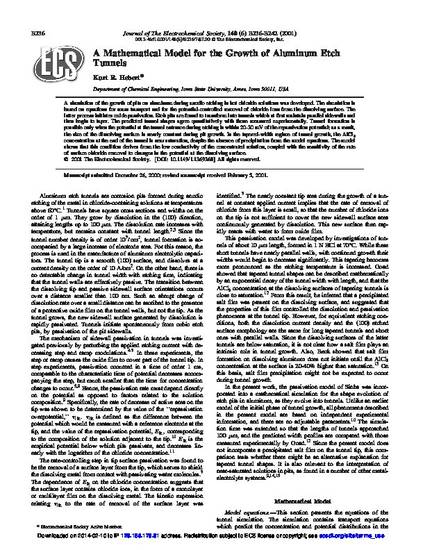
A simulation of the growth of pits on aluminum during anodic etching in hot chloride solutions was developed. The simulation is based on equations for mass transport and for the potential-controlled removal of chloride ions from the dissolving surface. The latter process initiates oxide passivation. Etch pits are found to transform into tunnels which at first maintain parallel sidewalls and then begin to taper. The predicted tunnel shapes agree quantitatively with those measured experimentally. Tunnel formation is possible only when the potential at the tunnel entrance during etching is within 20-30 mV of the repassivation potential; as a result, the size of the dissolving surface is nearly constant during pit growth. In the tapered-width regime of tunnel growth, the AlCl3 concentration at the end of the tunnel is near saturation, despite the absence of precipitation from the model equations. The model shows that this condition derives from the low conductivity of the concentrated solution, coupled with the sensitivity of the rate of surface chloride removal to changes in the potential at the dissolving surface.
Available at: http://works.bepress.com/kurtr_hebert/8/

This article is from Journal of the Electrochemical Society 148 (2001): B236–B242, doi:10.1149/1.1369368. Posted with permission.